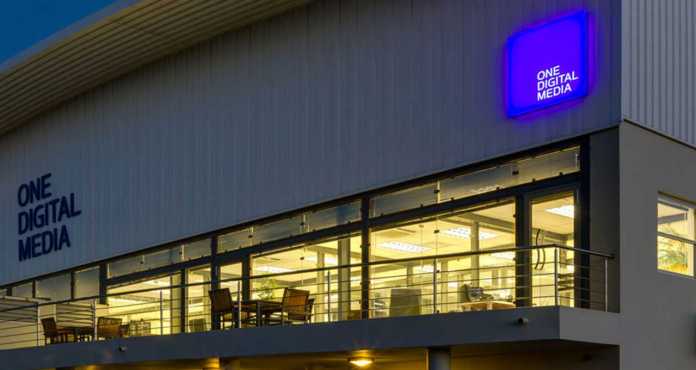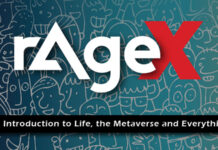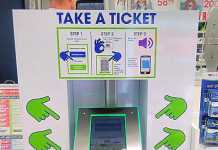The Pulse of Digital Signage Content
“Content is the lifeblood of any digital signage network, and content management is its heart,”, says Daniel Waldron, esteemed digital signage blogger and head of Content for award-winning, outdoor digital signage enclosure manufacturer, Armagard.
Andrew Ridl, CEO of One Digital Media (ODM) concurs and goes on to say, “Digital signage is only as effective as the content it displays. As the digital signage market becomes more saturated and competitive, and as consumers place more stock in mobile options for information delivery, it becomes imperative that a premium be placed on content that is engaging and memorable.”
The delivery mechanism of any message must be subservient to what is being delivered. Poor content precipitates poor customer experience, which ripples outwards creating irreparable damage to a company or its brands. For example, the visitor to a car dealer’s repair facility, can’t be questioned for doubting the establishment’s ability to repair her car, if the digital sign in reception reads, “We are committed to kwality.” The customer might logically conclude that they are not committed to quality if they can’t even take the time to correct a simple spelling error.
The psychosomatic effect on the customer moves far beyond such obvious problems as typos and misspelled words. Poor contrast, outdated visuals, shoddy design themes, expired offers, or photographic images used at a higher resolution than originally intended, all place a subconscious impression, in the viewer’s mind, that the company in question does not pay attention to detail and therefore can’t be committed to quality.
“Content is everything,” says Bill Collins, principal of research consultancy Decision Point Media Insights. “A store sells content — merchandise and services — and it sells a customer experience. So, the content of any store’s in-store digital media is fundamental in making the store experience friendly and helpful.”
Nowadays digital signage holds the promise of making content better than ever, brighter and more colourful, and more emotionally engaging for everyone involved. However, an important focus for the designer of the content is firstly, how do I attract my target audience and secondly, how do I keep them interested in what is being communicated?
Says Ridl, “Creating successful digital content is based on the design team addressing several basic pointers below:
- Conduct market research
Whilst a news broadcast may be interesting for some patrons in a restaurant, it may illicit groans from others. Market research needs to be conducted in order to understand what content will perk the customer’s interest whilst sitting, relaxing and enjoying a meal, or what will drive the irritated customer mad and straight out the door.
For example, if people on the road enjoy listening to music, a petrol station’s digital display could play top music videos. And if the petrol station is located on a national highway to the coast, various coastal regions could be featured, thus enhancing the holiday maker’ s trip.
- What screen will the content be displayed on?
When digital content is created, the screen that it will be displayed on needs to be considered and the following questions asked: – Where is the screen located? Who will be looking at it? What will they be doing while they look at it?
- What type of content should be displayed where?
- Text heavy content generally takes more than a few seconds to read and is best reserved for waiting areas or long queues.
- Shorter content should be used in areas where customers come and go quickly.
- Content for displays that are placed near a point of sale, such as a cash register or reception desk, create tempting impulse buys.
- Storefront digital signage that attracts customers to a store, should consist of advertising and promotional content.
- Call to action content should take the form of a video. Content may be king, but when it comes to digital signage, so is context.
- Be a stickler for text design
With numerous fonts, sizes, and colours to select, it seems as if text design is the part of digital signage content that lends itself most to creativity. However, depending on the application, poor font choice can derail an entire project. Fonts should always be simple and legible, especially from a reasonable distance, and too many fonts will muddy the message and may lose viewers.
- Choose colour wisely
Too many colours or the wrong colours together, can be a distraction or even worse, convey the incorrect emotion. In addition, combining certain colours may be a hit in the retail marketing arena, but garish colour combinations, used in an airport or train station, may be disconcerting for the traveller who is seeking basic information such as schedules.
- Use Motion Selectively
Often silhouettes and animation may interfere with readability or comprehension. As viewers should be given enough time to read text, movement should not be too abrupt.
- Alliteration & rhyme
For quicker viewer retention and memorization, rhyme and alliteration could be considered. Most viewers remember up to three items at any given time. By keeping the message clear and concise, and holding the screen views long enough, the message can be read and absorbed effectively.
- A place for humour
There are times when a playful injection of humour can transform digital signage content from ordinary to eye-catching and attention-grabbing. Once a viewer’s attention is caught, a conversation can be started with excellent content to follow. For many marketers, getting a customer ‘in the door’ is the first step to converting them into a sale.
- Keep it fresh
One major element separating digital signage from traditional signage is its ability to display dynamic content. If only static content is being displayed on the screen, the question remains, why even use digital signage? Dynamic content captures an individual’s attention, keeps the viewer interested and remains top of mind.
Customers and employees are 10 times more likely to observe dynamic digital signage content than static messages. Examples of dynamic digital signage content are videos, animations, social media feeds or RSS feeds. The latter two are the most likely to keep the content as fresh and exciting as possible, and they’re low maintenance. However, if a company’s social media account is being displayed, it’s essential that it is kept updated!
- Keep it Simple
At first glance, simplicity may seem contradictory to producing amazing content, however good visual communication should always be concise, easy to understand and memorable. Establish whether your content is interactive or not and then focus on delivering one key message, as too much information can overload and distract the viewer.
- Place a call to action on every screen
Start a call to action with a verb, keep the verb and subject close together, and embed it in each screen being used (e.g. “Get Yours Today,” “Get Started Now,” “Try it for Free.)
- Make it useful, not only colourful
When content is being designed, make sure it enhances the experience, not detracts from it. For example, many menu boards will use a dedicated attract screen for this type of animated content, such as McDonald’s where the content flows well and the actual menu is not affected. All content elements must work together and not compete against one another.
- Offer value, not technology
Often companies engage in technology, whilst not fully understanding how it will add value to the customer experience. The key question needs to be asked, “What will the customer gain if they pay attention to my content?” Will they be entertained or more likely to make a purchase, or both? Does it offer them some sort of discount?
When Ridl was asked by a new client, “Why do my customers turn up their noses at our digital signage?”, this was his summarised response; “Essentially it boils down to three components – relevance, uninspiring content and lack of engagement. The real problem however, is that if the same content continues to be shown, the more irritated the customer becomes, to a point of no return to the brand or product. However, fortunately with sound analytics and research available nowadays, there is no excuse for effective content not to occupy the digital screen.”
- Relevance – Certain digital signage software solutions are available that allow you to examine how long your customers will look at a display, whether they engage with it and what their emotional reaction is. This information can be used to your advantage when you know your customer’s profile and needs, so that suitable and relevant content can be created.
- Uninspiring content – Even if your content is relevant, that doesn’t mean it’s a winner. Sometimes digital displays simply advertise a product’s price, and nothing else. It’s not useless, as it may drive a few sales, however it’s only revealing a fraction of the message. A key element to inspiring content is that it doesn’t just deliver sales, it also boosts brand awareness and value. So, with all your content, you need to ask, “how will this improve my brand?”
- Lack of engagement – Some displays fail to engage the audience in a conversation with the product, brand or service. Digital signage offers many tools one of which includes social media integration. You can integrate a social media newsfeed from your brand and encourage your audience to like or follow your pages. Or you can integrate a camera in your display, so users can take selfies against backdrops or augmented reality elements, such as a virtual sports jersey. However, having said that you don’t need to turn your display into an interactive marvel, but you do need to discover a way for your audience to care about and communicate with your brand. By neglecting engagement to advance sales is a recipe for disaster.
“Our content scheduling department at One Digital Media (www.onedigitalmedia.com) is highly specialised and manages all the media and playlists on our networks and ensures that the right messages are sent to the right screen at the right time,” concludes Ridl.





















































































